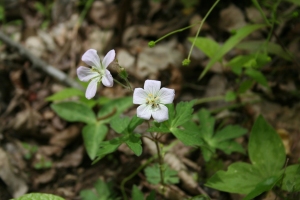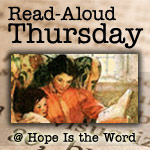
The Story About Ping probably doesn’t need much of an introduction, but I wanted to share a few of the books we read and an activity we did in relation to this story. For those who are unfamiliar with this classic tale, it’s Marjorie Flack’s story of a little duck named Ping who lives with his large family on “a boat with two wise eyes on the Yangtze River” in China. The ducks all leave their home during the day to hunt for food, but once the sun begins to set, the Master of the boat calls them back. It is unfortunate, though, to be the last duck to return; this duck always receives a spank on the back. One day, Ping is running late, and rather than be the one to get the spank, he decides to not return at all that night. What follows is a short little series of adventures which end up with Ping almost becoming a duck dinner. He learns his lesson, though, and decides that home’s best, spank or no spank. Marjorie Flack (who also wrote and illustrated the Angus stories) first published this book in 1933, so it’s a real classic. Kurt Wiese‘s illustrations are colorful and depict the action in the story very convincingly for the preschool set. (As a side note, Kurt Wiese spent some time in China and later in Australia as a prisoner of war of the Japanese. This is where he discovered and honed his talent for illustrations. Interesting, huh?) The Story About Ping is really too good to miss, which is why it’s included in the first volume of Five in a Row.
We didn’t “row” this book fully, and I decided to dispense with the lapbooking this time. As much as I want to, I just can’t always make myself love lapbooking. It’s a love-hate relationship, I guess. I think that if my children were older and had the motor skills necessary for lots of writing, etc., I might like it more. I’m not crossing it off the list yet, but I think it will be something we do sometimes instead of all the time. What we did, though, is share several other books set in China, as well as celebrate Chinese New Year with the reading of The Story About Ping. 
The book I liked the most that we read is Arlene Mosel’s Tikki Tikki Tembo, a book which certainly deserves its own Friday’s Vintage Find post. Tikki Tikki Tembo is a book I remember from my own childhood–I loved it! It takes some practice (or familiarity, at least) to read it well, but the effect is worth it. Another more recent book we enjoyed is The Moon Lady by Amy Tan. I was curious to read something by an author I previously knew only as an author of adult fiction, and neither I nor the girls was disappointed. 
This book, as well as the books I highlighted here, were perfect to go along with the Chinese New Year festival. We read a few more, including some nonfiction titles to provide some visual images of the Yangtze River and life in China, etc., but these two were the best picks.
In addition to doing a lot of reading, we also incorporated an art activity into our “study.” Storybook Art 
by MaryAnn F. Kohl and Jean Potter is a resource I often turn to for suggestions of art activities to really focus on some of the techniques of famous children’s book illustrators. It’s chock full of good ideas. One hundred illustrators are highlighted in this book, so in all likelihood, if it’s a classic story, it’s included in Storybook Art. This is where we got the idea to make a duck template and repeat the pattern. (Please excuse the glare and the shadow of my head, etc., on the pictures. I took these in the afternoon, and while the afternoon sun streaming through our schoolroom windows is lovely, it makes it difficult to take good pictures.)
This first picture includes the one I made. Until baby brother arrives and is old enough to participate, I suppose Mama will always have to create art, too, to fill up our three frames! 🙂
Louise once gain had her own idea about how this art activity should go. Her boat does have “wise eyes,” though.
Lulu included not only the ducks, but also a fishing bird that appears in the story. (I think the birds are actually cormorants.) Do you see the “wise eyes” on her boat?
Last, no study of another country is complete without at least looking at a map! I’ve still yet to get our map up on our school room wall, but I did pull it out so we could find China and the Yangtze River. The girls loved this!
I’m linking this post to this week’s stART at A Mommy’s Adventures. This is a great meme to which bloggers link their children’s literature-related art activities. Won’t you consider joining in?
Filed under: Arts and crafts, Education, Five in a Row, Holiday, Kindergarten, Our School Room, Picture Books, Preschool, Vintage Finds Fridays | 5 Comments »





























